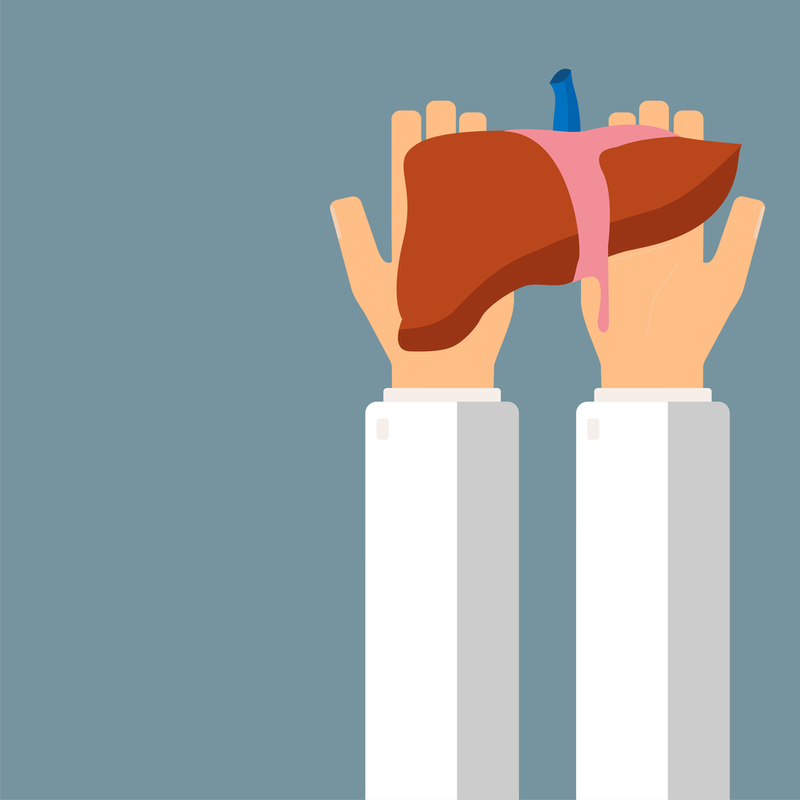Liver Transplant: Exploring an alternative method of organ preservation
M3 India Newsdesk May 15, 2018
A recent study published in the journal Nature shows that livers for transplant might survive better in a device that keeps them warm over one that cools them.

Organ transplantation has developed over the past 50 years. It is now a sophisticated technique available.Preservation and supply of organs of high quality and efficacy has always been a critical step.so far, the powerful effects of cooling have been implemented to slow down the biological deterioration in organs that have been retrieved.
However, a recent study published in the journal, Nature , shows that livers for transplant might survive better in a device that keeps them warm over one that cools them.
Under this new method, the liver is prepared by removing excess tissue and cannulating blood vessels.
It is then, connected to a circuit that perfuses it with oxygenated blood, medications, and nutrients at normal body temperature in a machine setup.
This normothermic machine perfusion (NMP) method promises to reduce allograft dysfunction, damage caused to the organ during transport and a longer preservation time. It will also aid surgeons in assessing the viability of the organ before the operation by testing the enzyme secreted into the blood when liver cells die.
Also, when the organ is in a device that mimics the body, doctors can easily assess the organ by the way it takes in blood and lets it out.
In the random trial conducted with 220 liver transplantations, NMP showed that the rate of organ discard was halved and the preservation time was doubled compared with when the organ was stored on ice. It also showed a 50 per cent lowering in the level of graft injury.
Static cold storage method often leads to organs being damaged due to the time required for transportation, thereby rendering them unusable. Deprived of blood, the organ has no source of oxygen and so uses up its stores of energy and injures itself in the process. This has been the procedure for almost 40 years now.
What doctors say
“While cold preservation protects the organ, there is still some injury to the liver during preservation and also when the organ is re-warmed after connecting it to the blood vessels and re-establishing blood flow (called reperfusion) in the recipient.
-Dr Arvinder Singh Soin
Padma Shri awardee and world-renowned liver transplant expert
Chairman and chief surgeon at Medanta Liver Institute, Gurugram
The liver can be preserved in University of Wisconsin (UW) cold storage solution at 4 degree Celsius for 10 to 12 hours. However, the longer it is preserved, the more the preservation-reperfusion injury and damage to the liver. If the liver is totally healthy to start with, such injury is withstood well and the organ functions well after transplant.
However, if the donated liver is not perfectly healthy (the common reason for this being the presence of fat in the liver), or kept in static cold storage for too long, it may not function well initially, and it may take time for its functions to pick up. This means extra ICU and hospital stay for the patient who receives such an organ. Occasionally, the organ may fail to function altogether, which means the patient will need another liver or die."
Benefits of the new method
Dr. Soin, who has performed more than 2,500 liver transplants, explains the multiple advantages of normothermic machines over static cold storage.
Advantages of normothermic machines
- It maintains artificial blood circulation in the liver at normal body temperature with the supply of oxygen to the liver cells, just like in the human body, thus preventing preservation and re-warming damage to liver cells.
- The normal blood circulation through the liver can revitalise and rejuvenate damaged and/or fatty livers, and hence make at least 30 per cent more livers suitable for use for transplantation compared with the static cold preservation.
- The machine has a monitor where important parameters and test reports of liver function are continuously displayed in real time. This gives a clear indication of how the liver will fare in the patient once transplanted. The surgeon can decide to take the liver off the machine once these test reports have normalised and are ideal.
- Sometimes, the liver is harvested in a hospital far away from the actual transplant center. Here, the logistics can be helped by transporting the liver connected to the machine. This allows transport across long distances over up to 12-18 hours, without deterioration in the quality of the liver.
Costly but worth it
Dr. Soin says machine perfusion will add around Rs 4 to 5 lakhs to the cost of a liver transplant. However, since the method increases the success rate of a transplant and ensures the organ functions better than in static cold storage, he says it will save the patient extra days in the ICU or hospital. He underlines that these advantages will offset the cost of the machine. Besides, as the technology becomes more widely available, it is likely to get cheaper.
This story was contributed by Parvathy Jayakrishnan, a freelance writer and a member of 101Reporters, a pan-India network of grassroots reporters.
-
Exclusive Write-ups & Webinars by KOLs
-
Daily Quiz by specialty
-
Paid Market Research Surveys
-
Case discussions, News & Journals' summaries